What Is Music, Really?
An exploration of the nature of signals
“Stop thinking about art works as objects, and start thinking about them as triggers for experiences.”
Brian Eno
There have been new instruments for as long as there has been music. Imagine, for example, being one the first to hear a lyra, a pear-shaped bowed instrument which appeared in the Byzantine Empire around the 11th century, which led to the emergence of the violin in 16th century Europe. How delightful, or shocking, must it have been to attend a performance and hear a completely new sound in such an era?
Enter electronic music, probably a lot earlier in history than you might expect. Some would take it as far back as the 1700’s, but we know for a fact that electrical signals were being used to make musical sounds in the late 19th century. Two examples would be something called the Telharmonium from Thaddeus Cahill and Matthaüs Hipp’s Electromechanic Piano.
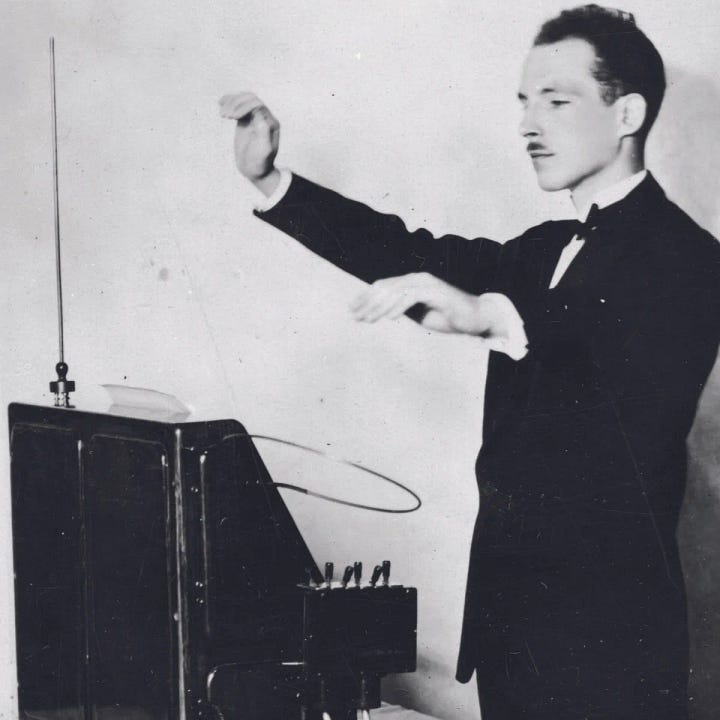

By the 1920’s, a spooky-sounding instrument was invented which enabled control of both pitch and volume by a player’s hand motion. It was called the Theremin. You will hear this in 50’s science fiction films, and it is still used today for everything from sound design to orchestral performance.
Here is Clara Rockmore performing Saint-Saëns: The Swan from The Art of the Theremin:
A young Bob Moog learned how to build theremins while in high school, and ended up selling them through college. By 1964, already well known amongst musicians as a creator of unique instruments, he unveiled something completely new: the first modular voltage-controlled synthesizer.
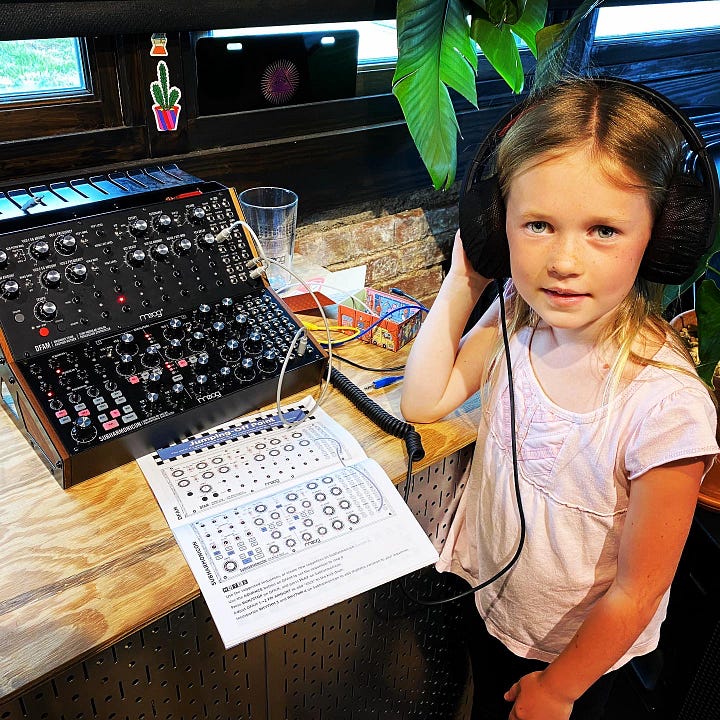
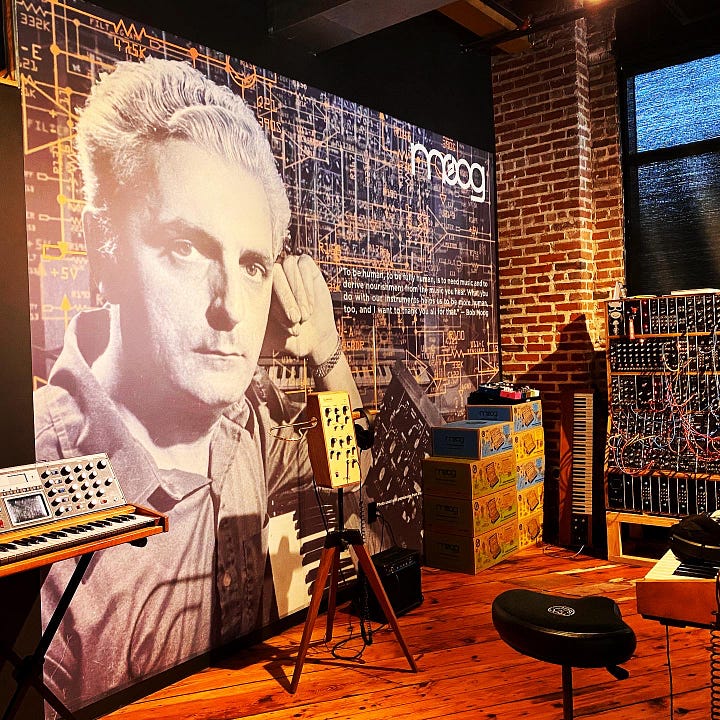
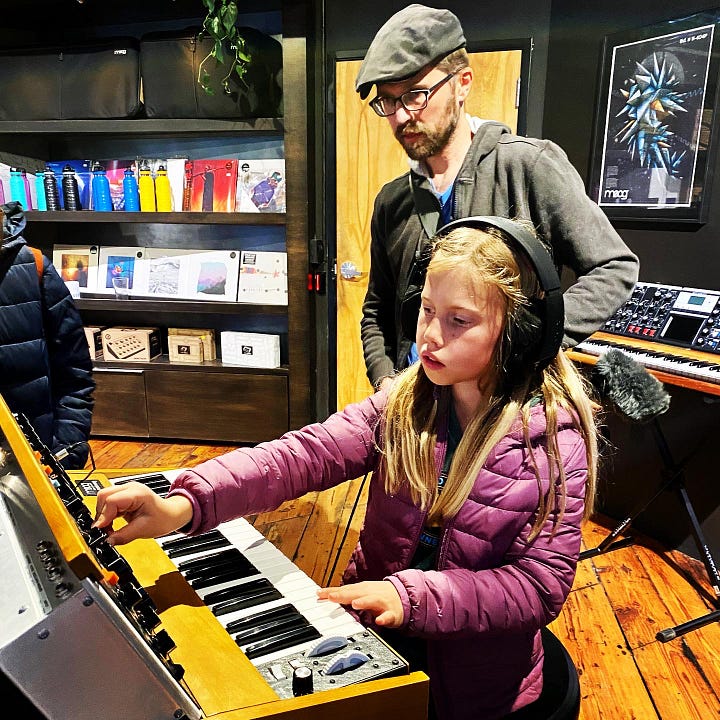
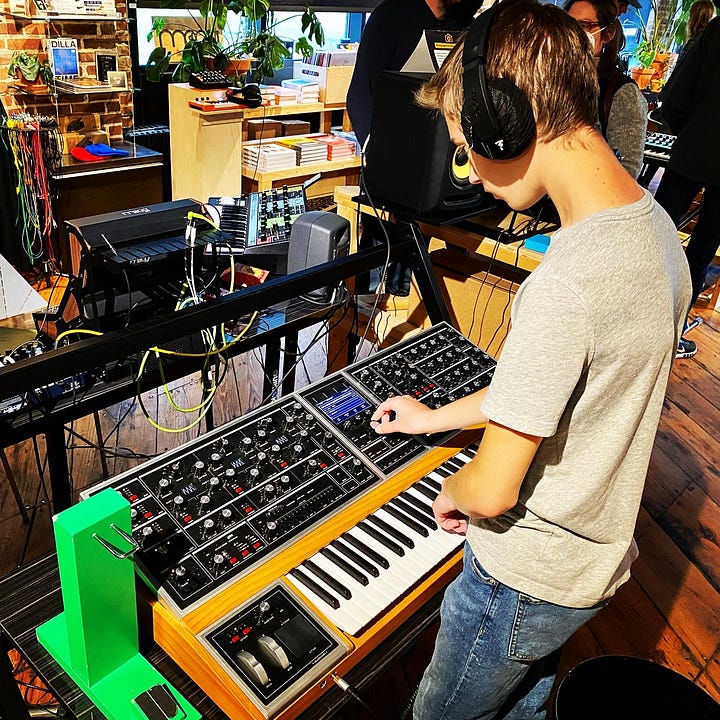
Created at the request of avant-garde composer Herb Deutsch, the synthesizer allowed for the creation of complex, experimental sounds as well as an ability to replicate the familiar: plucks, bowed strings, bass tones, clanging drums, and more were possible. These instruments remained primarily in use by experimental musicians for some years.
Listen to Hans Wurman’s 1969 recording of Toccata And Fugue In D Minor from a collection of classical compositions performed on the Moog Synthesizer:
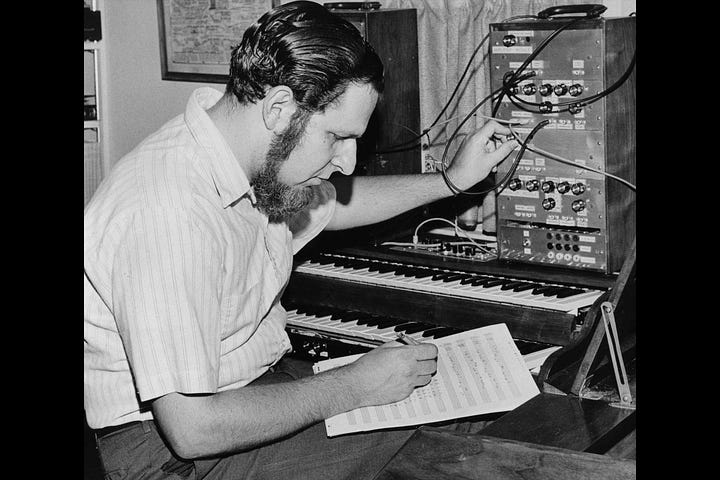
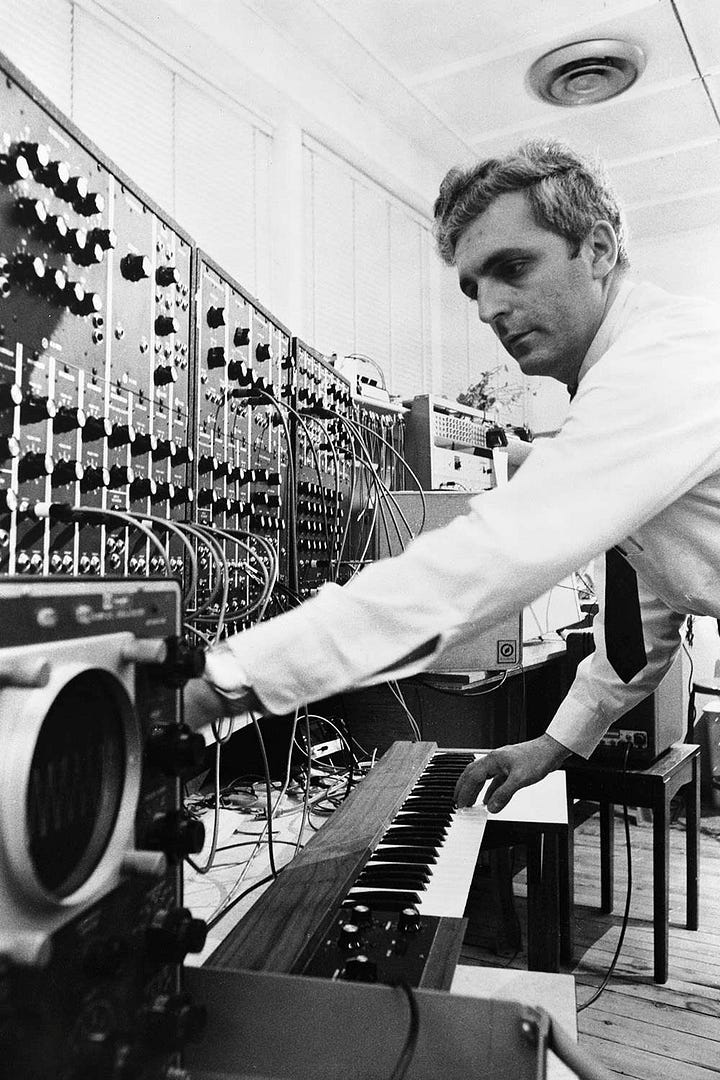
Eventually, the iconic Moog sound became commonplace in practically every genre: if you have heard The Doors — Strange Days, The Beatles — Here Comes the Sun, Kraftwerk — Das Model, Gary Numan — Are ‘Friends’ Electric?, Michael Jackson — Thriller, or Daft Punk — Da Funk, you’ve heard Moog. Synthesizers are also used by prominent film composers such as Hans Zimmer.
But to understand what a synthesizer is, and why it is interesting, one must ask, what is music, anyway? All sound arrives at your ear through pressure waves traveling through the air. These waves can be thought of as signals, which are formed into music by their specific frequencies (which we call notes), and their interaction into tonal signatures or timbres. This is what makes one instrument (or one voice) sound different from another. Imagine being able to replicate those signatures, and in doing so, model any instrument!
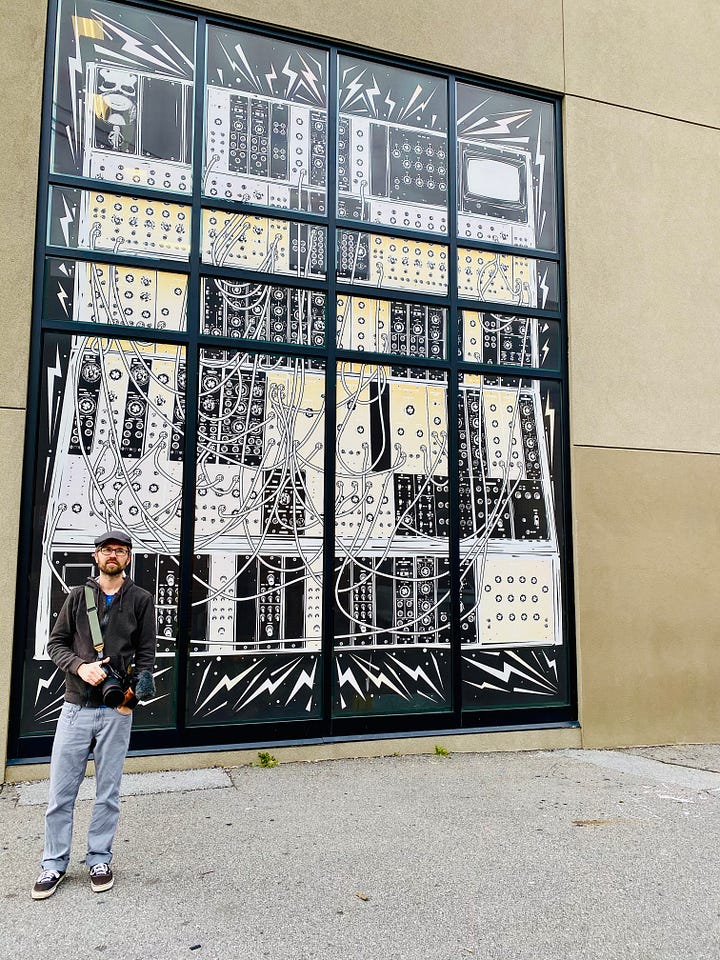
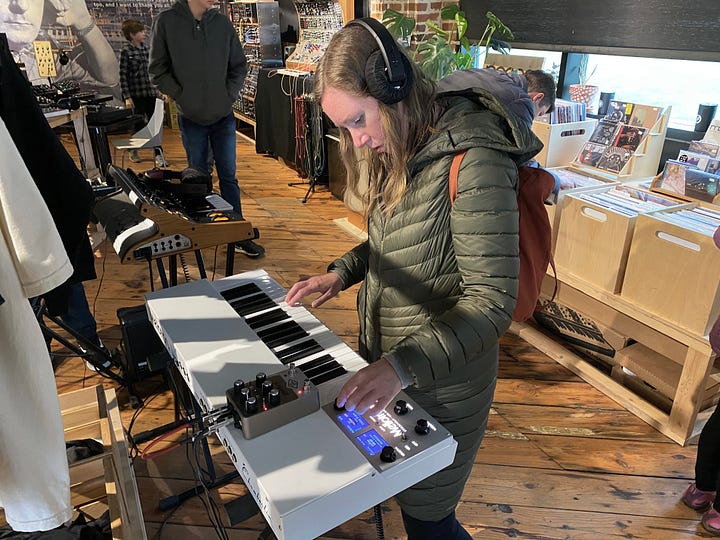
You can think of the most basic synthesizer as one distinct signal, or wave, set to one adjustable audible frequency, which is amplified (or set to a certain volume) by a simple electrical circuit. This signal is created by another simple circuit called an oscillator. This will be one tone sent over a wire to a speaker, the same as you would get if you sing one note, “ooooooo”. If you modify, or filter, that signal before it is amplified, the wave takes on a more complex form, such as if you try singing one note as “wwwooowww”. Your mouth is doing the filtering in this case.
Large modular synthesizers have multiple oscillators, filters, and amplifiers. They also add sequencers, which you can think about in simple terms as a way to play a sequence of notes automatically. Often, a synthesizer will also have practical controls for musicians such as keyboards which resemble a piano or organ. The keyboard can be used by the player to tell one or more of the oscillators to play the note corresponding to a given key. In a more advanced scenario, pressing one key could trigger multiple notes at once, or something that sounds like nothing you’ve ever heard!
We were fortunate to visit the Moog factory where these amazing instruments are built, in Asheville, NC in 2022. I filmed some of our experimentation there and created a fitting soundtrack you can see and hear, here:
I am astounded by the historic engineering achievement that is the Moog Synthesizer, and as a lifelong musician, this was an especially exciting visit for me. My hope is that you have enjoyed this exploration, and have come away with a new appreciation for the electronic instruments that have contributed so much not only to music, but to sound itself.



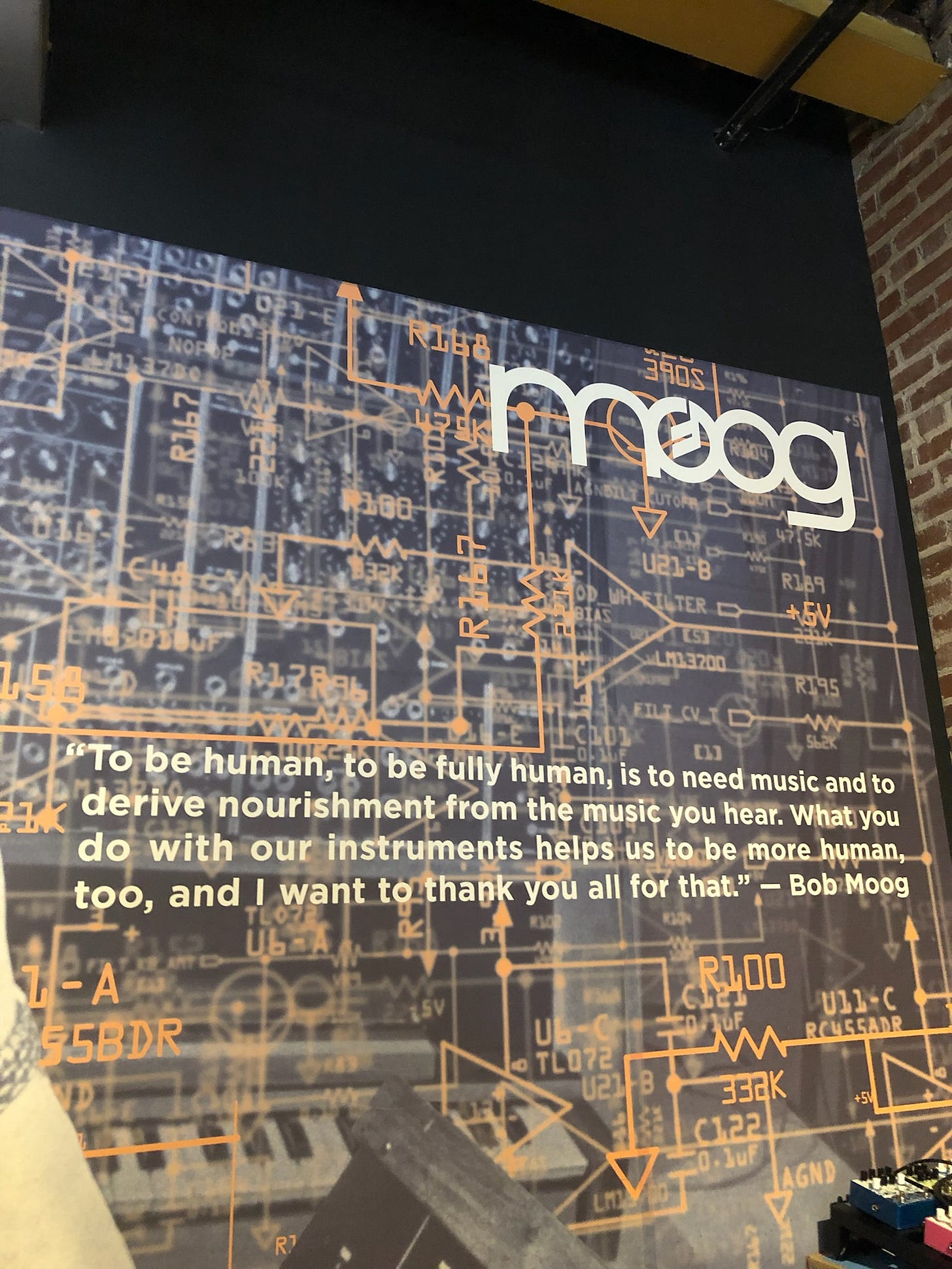
I just heard of a Theremin last year! Soo weird and fascinating!